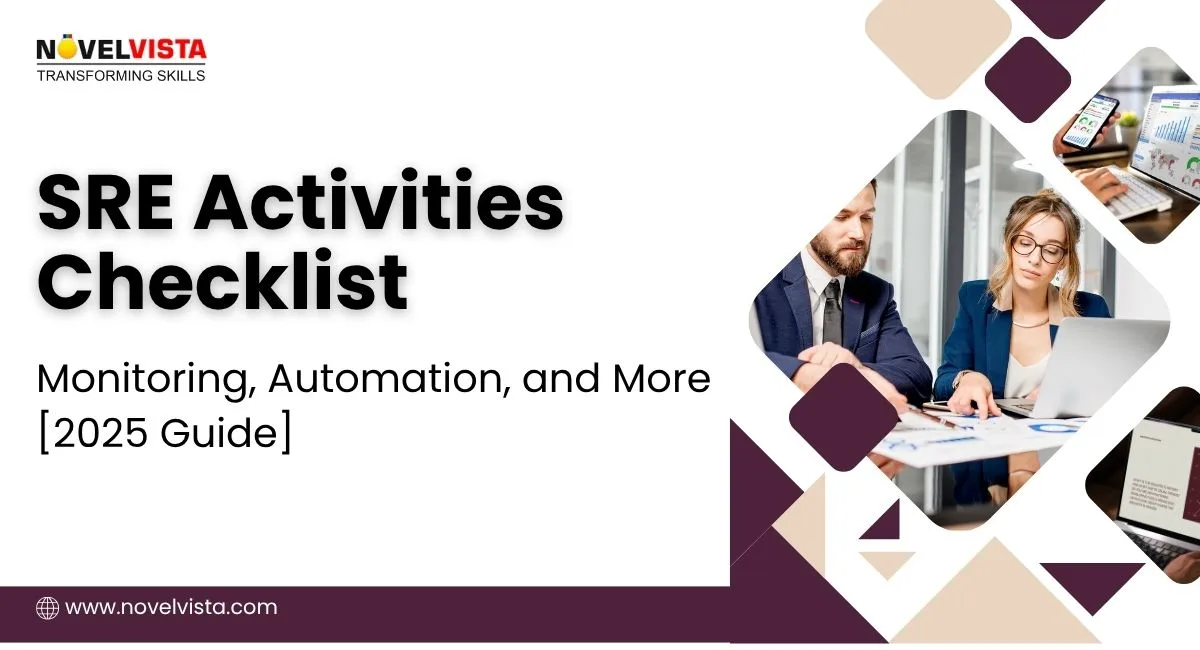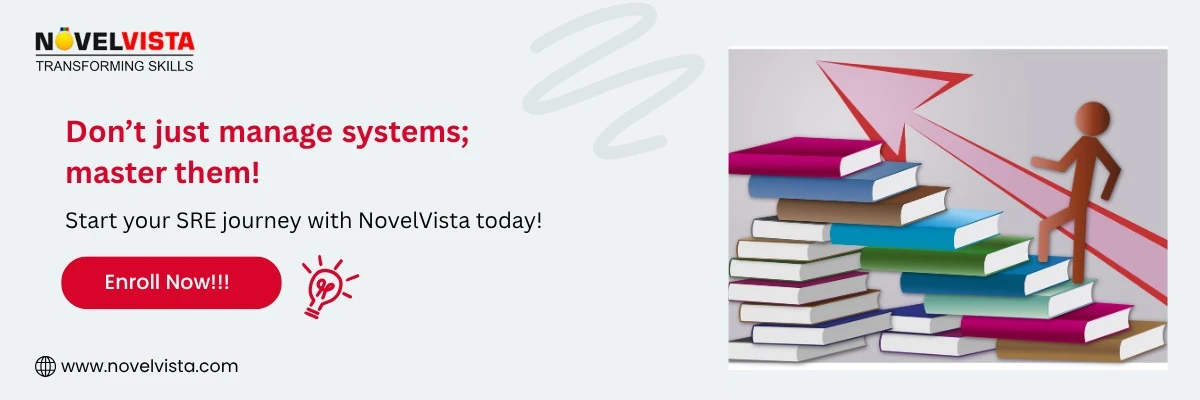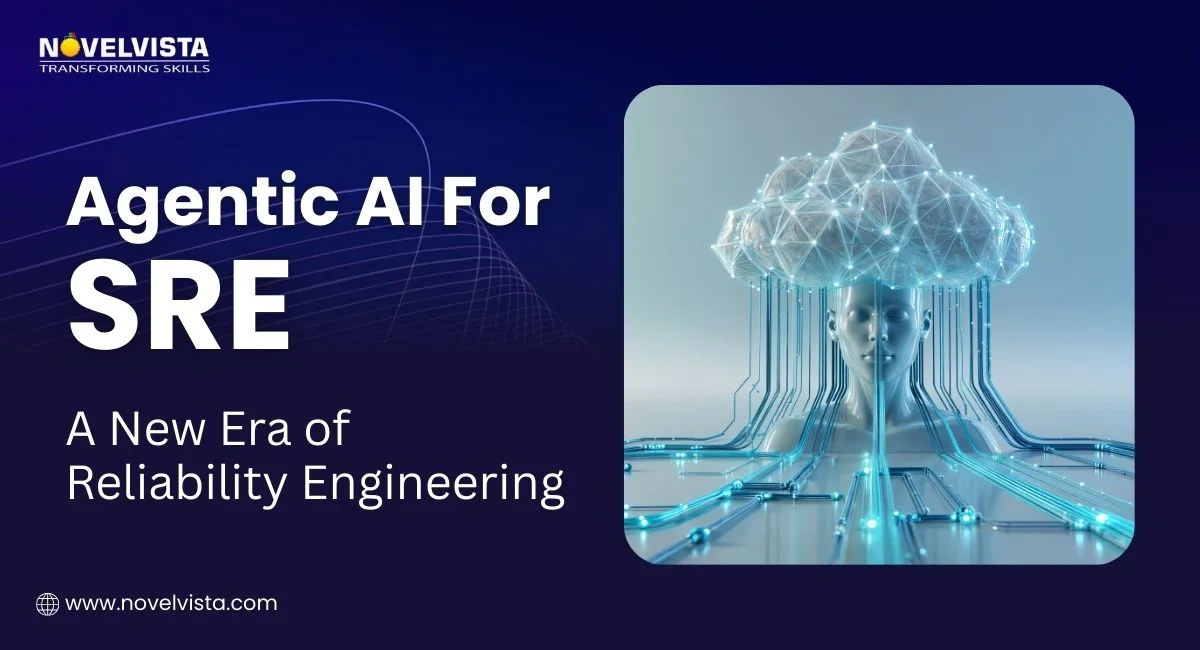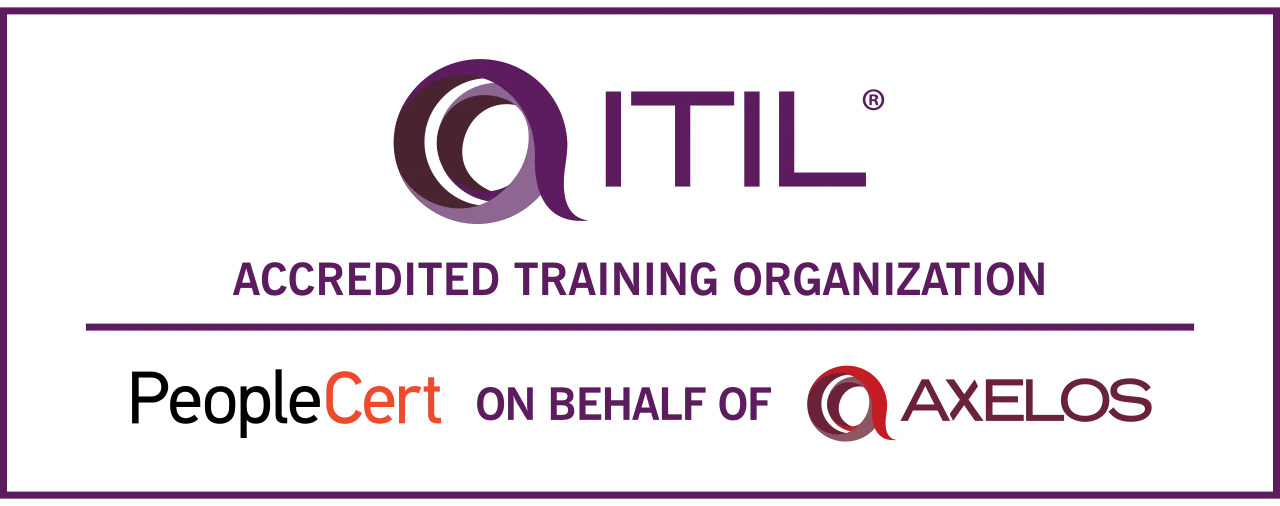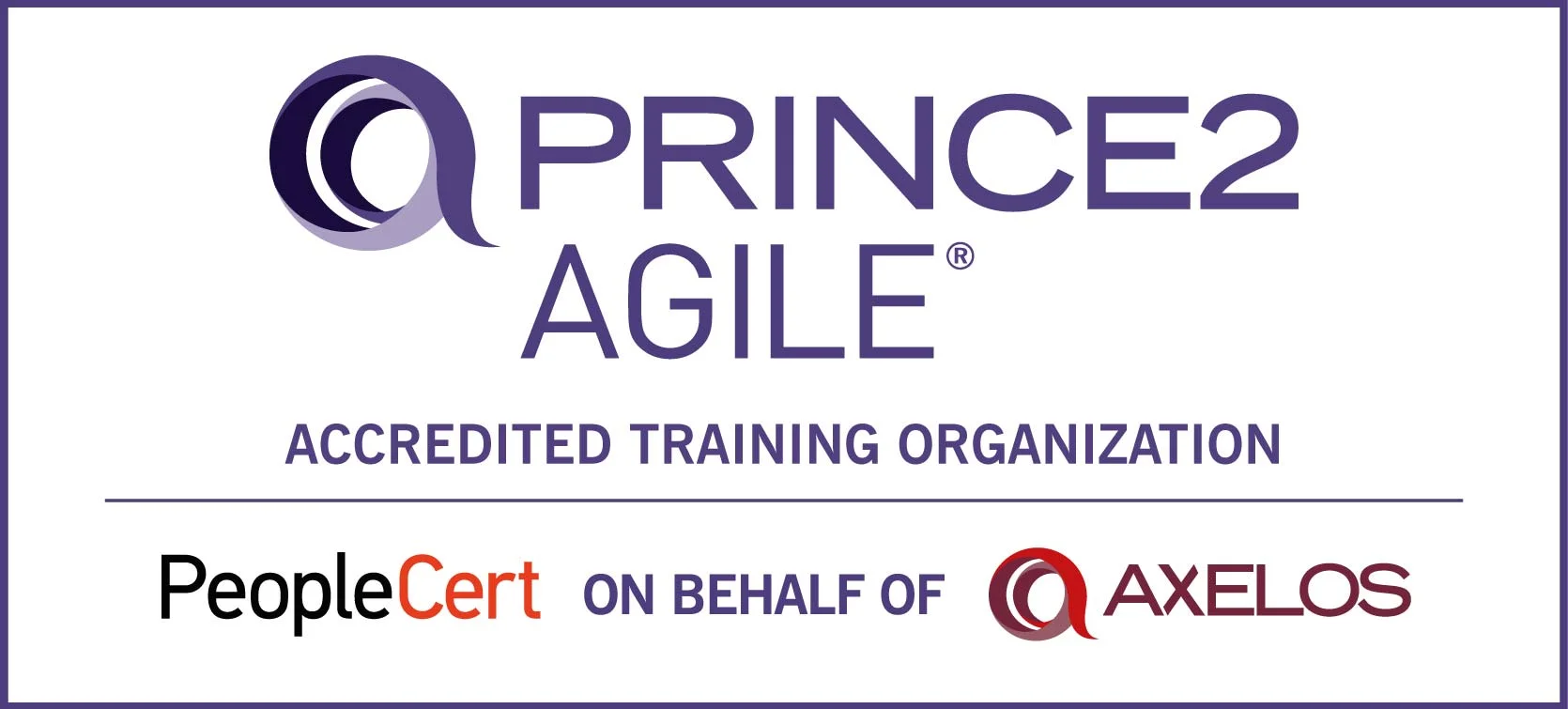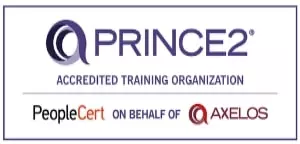SRE activities like capacity planning, monitoring, change management, and error budgets are the backbone of maintaining high system reliability. But as systems scale, manual interventions often fall short, leading to longer response times, higher failure rates, and wasted time.
The key to overcoming these challenges? Automation. By integrating automation into your cloud computing environment, you not only streamline your workflows but also ensure quicker emergency response and smoother change management. The goal is simple: build scalable, self-healing systems that can manage incidents with minimal human intervention.
Let’s explore the key tasks an SRE must perform to ensure system reliability and the SRE checklist they should follow to implement automation-first practices, keeping systems running smoothly.
The Ultimate SRE Activities Checklist
To ensure your systems are reliable and scalable, it’s crucial to focus on the right tasks at the right time. Below is a core activities of SRE checklist that will guide your daily, weekly, and long-term activities.
1. Monitoring and Observability:
- Real-time tracking: SREs use monitoring tools (e.g., Grafana, Prometheus) to visualize system metrics and track performance.
- Alerting and Dashboards: Set up alerts based on SLIs and create dashboards to monitor key system metrics, ensuring service reliability.
- Golden Signals: Track latency, traffic, errors, and saturation to get a comprehensive view of your system’s health.
2. Incident Management:
- On-call readiness: Ensure the team is prepared and equipped to respond quickly to incidents, minimizing system impact.
- Alert tuning: Review alerts to filter noise and improve accuracy, ensuring the team isn't overwhelmed by false alarms.
- Post-Incident Reviews (PIRs): Conduct reviews to identify root causes, improve processes, and strengthen incident response.
3. Automation Hygiene:
- Auto-tuning: Update alert thresholds and automate adjustments based on evolving system conditions.
- Runbook automation: Replace manual runbooks with automated scripts (Bash, Python, Go) to streamline common tasks and reduce errors.
4. SLOs/SLIs Management:
- Regular SLO review: Continuously review and adjust SLOs based on user impact and business needs.
- Error budget management: Balance reliability and innovation by managing error budgets and aligning with stakeholder expectations.
5. Capacity & Scalability Planning:
- Predicting resource needs: Forecast infrastructure needs based on usage patterns and growth projections.
- Right-sizing services: Implement cost-effective autoscaling to optimize infrastructure performance without overspending.
6. Release Engineering:
- Zero-downtime deployments: Ensure smooth releases with validated rollback automation processes to avoid downtime.
- Rollback automation: Automate rollbacks triggered by SLO violations to minimize user impact.
7. Chaos Engineering:
- Controlled failures: Use tools like Gremlin and LitmusChaos to test system resilience by simulating failures under stress.
- Evaluating resilience: Evaluate how systems respond to failure scenarios and address identified weaknesses.
8. Security & Compliance Collaboration:
- Automating compliance: Automate compliance reporting to meet industry regulations and standards.
Anomaly detection integration: Collaborate with the infosec team to integrate tools for detecting and mitigating security threats.
Tools For SRE Activities
Here’s a handy reference table that matches tools with the key SRE activities:
Category |
Tools |
Purpose |
Monitoring |
Grafana, Prometheus, Datadog |
Observability, alerts, system health tracking |
Incident Response |
PagerDuty, Opsgenie, Blameless |
Escalation, on-call management, PIRs |
IaC and Provisioning |
Terraform, Ansible, Helm |
Scalable infrastructure automation |
Chaos Engineering |
Litmus, Gremlin |
Resilience testing |
CI/CD Rollbacks |
ArgoCD, Jenkins, Spinnaker |
Safe deployments, rollback automation |
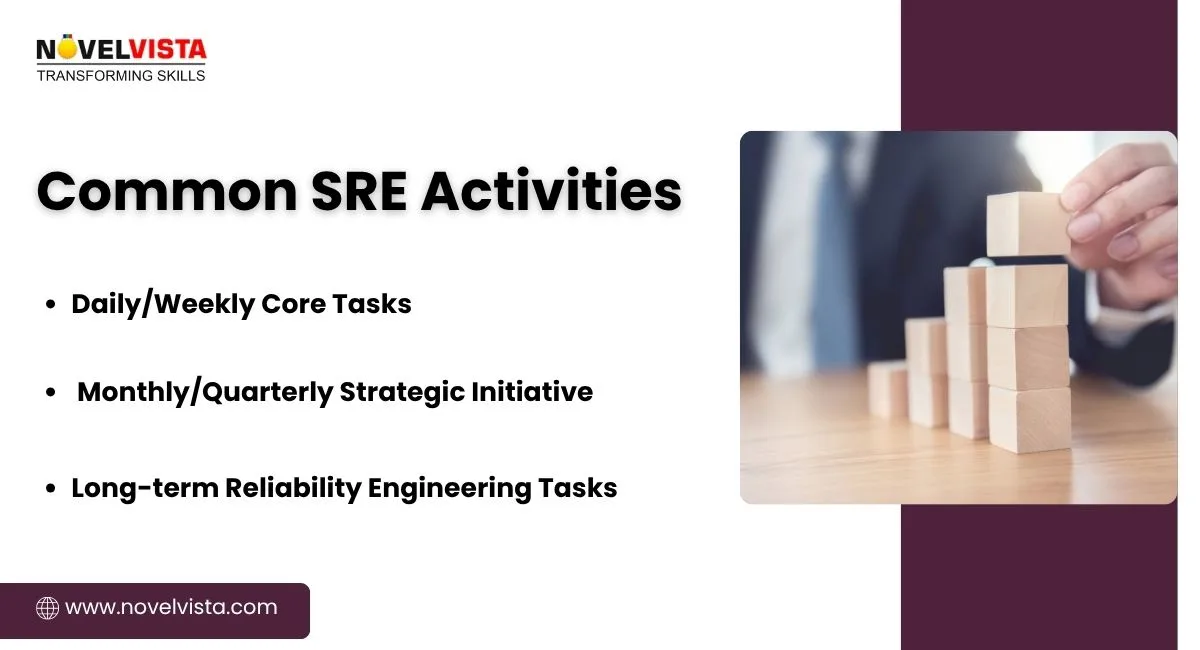
Action Plan: Implementing the Checklist in Your Role
Now that you have the SRE activities checklist, it’s time to put it into action. Here’s a structured 90-day roadmap to help you implement SRE automation and improve system reliability across your team.
1. Week 1–2: Audit Current SRE Practices & Monitoring Stack
- Objective: Assess your current setup before automation.
- Tasks:
- Conduct an SRE maturity assessment.
- Review existing monitoring stack.
- Ensure tracking of the golden signals.
- Identify high-toil tasks to automate.
- Conduct an SRE maturity assessment.
2. Week 3–4: Implement Daily/Weekly Activities & Basic Alerting
- Objective: Start integrating observability and alerting automation.
- Tasks:
- Set up dashboards with Grafana or Prometheus.
- Automate basic alerting workflows.
- Refine alerting thresholds to reduce false positives.
- Minimize noise, ensuring critical incidents are escalated.
- Set up dashboards with Grafana or Prometheus.
3. Week 5–6: Define SLOs/SLIs & Incident Management Flow
- Objective: Focus on defining SLOs, SLIs, and incident management flow.
- Tasks:
- Define SLOs and SLIs to measure service reliability.
- Automate incident management processes.
- Refine on-call rotation and ensure team readiness.
- Define SLOs and SLIs to measure service reliability.
4. Week 7–8: Introduce Chaos Testing & Auto-Remediation Tools
- Objective: Test system resilience and implement auto-remediation.
- Tasks:
- Set up chaos experiments with tools like Gremlin or LitmusChaos.
- Implement auto-remediation actions (auto-scaling, service restarts).
- Test auto-remediation flows to reduce manual intervention.
- Set up chaos experiments with tools like Gremlin or LitmusChaos.
Download the SRE Activity Checklist
A practical checklist covering key SRE activities to help teams improve reliability, availability, and operational efficiency.
Final Takeaway
SRE activities are not boxes to check; it’s a mindset shift. By automating critical reliability tasks such as monitoring, incident response, and deployment, you can focus on scaling and innovating rather than just putting out fires. The tools like Grafana, PagerDuty, Terraform, and Prometheus are powerful when combined with structured guidance and hands-on learning.
SRE isn’t just about monitoring and firefighting; it’s about building resilient, self-healing systems that can handle incidents with minimal human intervention. Start small, implement automation gradually, and watch your systems become more reliable and your team more productive.
With NovelVista’s SRE Training, you’ll get the tools, techniques, and mentorship needed to transform your workflows and implement this checklist with confidence.
Next Steps:
- Download the FREE core SRE activities Checklist to guide your journey toward full automation.
- Join NovelVista’s SRE Foundation Training to dive deeper into hands-on training with expert guidance, industry-standard tools, and real-world scenarios.
Frequently Asked Questions
Author Details

Vaibhav Umarvaishya
Cloud Engineer | Solution Architect
As a Cloud Engineer and AWS Solutions Architect Associate at NovelVista, I specialized in designing and deploying scalable and fault-tolerant systems on AWS. My responsibilities included selecting suitable AWS services based on specific requirements, managing AWS costs, and implementing best practices for security. I also played a pivotal role in migrating complex applications to AWS and advising on architectural decisions to optimize cloud deployments.
Confused About Certification?
Get Free Consultation Call

